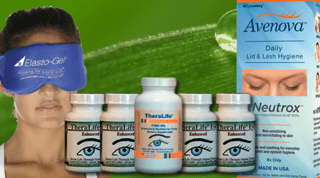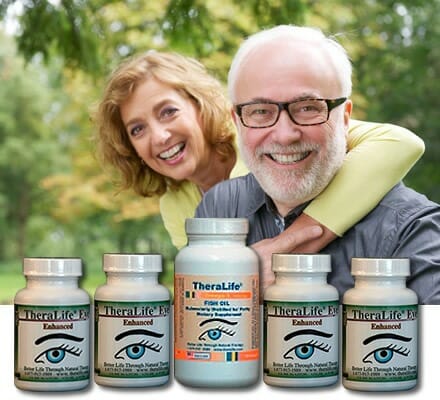People complain about eyes being especially dry at night. May wake up in the middle of the night to put in eye drops. Eyelids are sometimes stuck together in the morning. Is there a way to control this?
What causes dry eyes at night?
A key reason for dry eyes at night is the slow down of the metabolic rate during sleep. Your body is preparing for sleep body by slowing down bodily functions, including blood circulation. Therefore, fewer nutrients and blood are flowing to the eyes, causing low tear production.
Events that occur during the day can lead to symptoms that worsen at night. Such symptoms can affect vision, while others are physical.
How TheraLife can help
Take four capsules of TheraLife Eye before bedtime- help you produce your natural tears to reduce dry eye symptoms. No more artificial tears.
TheraLife Eye capsules target to improve micro-circulation throughout the body – allowing you to produce natural tears. We recommend you take four capsules right before bedtime to relieve dry eyes at night. Use TheraLife Dry Eye protocol during the day for all-day comfort.

Stop night time dry eyes with TheraLIfe
Role of Tears in Dry Eye Treatment
Dry eyes are when the eyes do not have enough quality tears to lubricate and nourish the eye. Frequent use of artificial tears is not the answer. Regular use of eye drops makes your eyes drier.
However, when eyes dry out due to riding in a car with the windows down. After the event, the eyes go back to comfortable and produce quality tears again. Dry eye is not the cause.
However, for millions of people worldwide, chronic dry eye is a problem that causes uncomfortable vision. It can lead to impaired vision if not treated.
Tear film imbalance Issues in Symptoms of Dry Eyes
- Insufficient tears – not enough tears
- Tears are evaporating too quickly.
- Blurred vision
- Eyelids that do not close properly
- An imbalance of water, oil, and mucus in the tear
- Medical conditions such as autoimmune diseases
- Environmental conditions such as windy, hot, and dry weather
- Medications such as antidepressants,
- Gender- females are more likely to get dry eye than males.
- Age – dry eye is an aging phenomenon leading to decreased tear production.
- Eye surgery such as LASIK, cataract
- Extended computer usage
- Watery dry eyes( too many tears) due to clogged tear ducts. Your eye doctor may do surgery to open up the tear ducts allowing the excess tears to drain. Eye drops do not work for watery dry eyes.
- Autoimmune diseases such as Sjogren’s, Rheumatoid Arthritis have chronic dry eyes.
Symptoms of dry eyes vary from person to person. Be sure to detail these tear film issues to your eye doctors.
Tear film problems in dry eyes
There are three separate layers to the tear film on the eye surface.
- outer oily layer,
- middle watery layer
- inner mucus layer
With each layer working together to help the eye focus and lubricate.
Symptoms of Dry Eyes
Symptoms of dry eyes include itchy, dry, blurry vision, light sensitivity, and eye pain. The eye can be irritated at night.
When there is an imbalance between these three layers, many visual and physical symptoms of dry eyes can occur:
- Vision out of focus.
- Blurred vision
- Sensitivity to light. A classic dry eye symptom. Constant squinting can lead to headaches.
- Inability to drive at night. When the eye surface is dry, the light is scattered and causes halos and glare from a light source. Driving at night can be especially dangerous.
- Dry eyes are causing a sandy, gritty feeling.
- Blood vessels on the surface become enlarged, arising from red eyes.
- Dry eye pain can range from mild to severe.
- Stinging, burning, and itching symptoms occur on the eye surface and eyelids.
- Watery eyes are causing dry eyes. A delicate balance between the protective fluids on the eye surface becomes imbalanced and can cause dry eyes. Sometimes the tear ducts may be clogged to cause watery eyes.
- Dry eyes can cause heavy and tired eyelids.
- Staring at a computer screen, reading a book for hours, or even driving long distances can cause the eyes to blink less, which increases tear evaporation.
- Contact lenses can cause dry eyes by making tear evaporation faster.
- I can’t cry even when emotionally compelled to do so.
- Discharge from the eyes – Blepharitis results from too much mucus discharge on the eye’s surface.
- Eyes partially open during sleep –known as nocturnal lagophthalmos. Nocturnal Lagophthalmos can lead to evaporation on the eye surface.
- Hormonal changes cause women in menopause to experience dry eyes at a higher rate than their male counterparts.
- LASIK surgery to correct poor vision creates corneal flaps that affect the nerves responsible for tear production and cause some patients to experience dry eyes permanently.
All of the symptoms listed above can cause nighttime dry eyes.
Many of the causes of dry eyes occur during the day; they may not notice it until the evening.
Dry Eye Treatment from TheraLife
All of the dry eye symptoms that lead to dry eyes can be relieved or eliminated with TheraLife. With an entire line of natural products, TheraLife provides oral dry eye relief through natural therapy. Producing enough tears will eliminate many of your dry eye symptoms.
TheraLife Eye Capsules-
Clinically proven to work for 80% of first-time users, TheraLife Eye Enhanced is a proprietary blend of natural ingredients that allow the body to heal the eyes from the inside out. The proprietary blend restores and revitalizes intracellularly to allow natural tear production all day long.
Theralife Omega 3 Fish Oil
Fish oil is known to benefit the eyes. TheraLife Omega-3 Fish Oil is molecularly distillation purified, and the lighter fractions of fish oil are collected. Many other fish oil capsules do not use this process, and mercury, PCB, and other contaminants are left behind.
Avenova EyeLid Cleanser
TheraLife Eye Lid Cleaner removes dirt, mites, and other irritants from the eyelids and lashes.
Theralife Warm Compress
Using the Elasto-gel hot compress during the day can provide relief for dry eyes.
When used at night, the mask provides comfort and keeps the eyelids closed during sleep.
Next Step
Don’t continue to suffer from dry eyes. Go to TheraLife now and begin your journey to dry eye relief.
Call TheraLife today to get relief now. 1-877-917-1989 US/Canada.
References
1.yaki M, Kawashima M, Negishi K, Tsubota K. High prevalence of sleep and mood disorders in dry eye patients: survey of 1,000 eye clinic visitors. Neuropsychiatr Dis Treat. 2015; 11: 889–894.
2.Han SB, Yang HK, Hyon JY, Wee WR. Association of dry eye disease with psychiatric or neurological disorders in elderly patients. Clin Interv Aging. 2017; 12: 785–792.
3.Zheng Y, Wu X, Lin X, Lin H. The prevalence of depression and depressive symptoms among eye disease patients: a systematic review and meta-analysis. Sci Rep. 2017; 7: 46453.
4.Schaumberg DA, Dana R, Buring JE, Sullivan DA. Prevalence of dry eye disease among US men: estimates from the Physicians’ Health Studies. Arch Ophthalmol. 2009; 127: 763–768.
5.Schaumberg DA, Sullivan DA, Buring JE, Dana MR. Prevalence of dry eye syndrome among US women. Am J Ophthalmol. 2003; 136: 318–326.
6.Rocha FL, Uchoa E, Guerra HL, Firmo JO, Vidigal PG, Lima-Costa MF. Prevalence of sleep complaints and associated factors in community-dwelling older people in Brazil: the Bambuí Health and Ageing Study (BHAS). Sleep Med. 2002; 3: 231–238.
7.Versura P, Campos EC. Menopause and dry eye. A possible relationship. Gynecol. Endocrinol. 2005: 20: 289–298.
8.Blask DE. Melatonin, sleep disturbance and cancer risk. Sleep Med Rev. 2009; 13: 257–264.
9.Kripke DF, Garfinkel L, Wingard DL, Klauber MR, Marler MR. Mortality associated with sleep duration and insomnia. Arch Gen Psychiatry. 2002; 59: 131–136.
10.Tamakoshi A, Ohno Y; JACC Study Group. Self-reported sleep duration as a predictor of all-cause mortality: result from the JACC Study, Japan. Sleep. 2004; 27: 51–54.
11.Garbarino S, Durando P, Guglielmi O, et al. Sleep apnea, sleep debt and daytime sleepiness are independently associated with road accidents. A cross-sectional study on truck drivers. PLoS One. 2016; 11: e0166262.
12.Kling RN. Sleep problems and workplace injuries in Canada. Sleep. 2010; 33: 611–618.
13.Stone KL, Blackwell TL, Ancoli-Israel S, et al. Sleep disturbances and risk of falls in older community-dwelling men: the outcomes of Sleep Disorders in Older Men (MrOS Sleep) Study. J Am Geriatr Soc. 2014; 62: 299–305.
14.Chang PP, Ford DE, Mead LA, Cooper-Patrick L, Klag MJ. Insomnia in young men and subsequent depression. The Johns Hopkins Precursors Study. Am J Epidemiol. 1997; 146: 105–114.
15.Kaneita Y, Kaneita Y, Ohida T, Uchiyama M, et al. The relationship between depression and sleep disturbance: a Japanese nation-wide general population survey. J Clin Psychiatry. 2006; 67: 196–203.
16.Nakajima H, Kaneita Y, Yokoyama E, et al. Association between sleep duration and hemoglobin A1c level. Sleep Med. 2008; 9: 745–752.
17.Watanabe M, Kikuchi H, Tanaka K, Takahashi M. Association of short sleep duration with weight gain and obesity at 1-year follow-up: a large-scale prospective study. Sleep. 2010; 33: 161–167.
18.Kaneita Y, Uchiyama M, Yoshiike N, Ohida T. Association of usual sleep duration and serum lipid and lipoprotein levels. Sleep. 2008; 31: 645–652
19.Gangwisch JE, Heymsfield SB, Boden-Albala B, et al. Short sleep duration as a risk factor for hypertension. Analyses of the First National Health and Nutrition Examination Survey. Hypertension. 2006; 47: 833–839.




